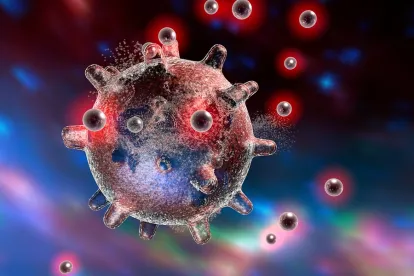The Organization for Economic Cooperation and Development (OECD) recently published several reports in its Series on the Safety of Manufactured Nanomaterials, including Developments in Delegations on the Safety of Manufactured Nanomaterials — Tour de Table. The Tour de Table compiles information provided by delegations on the occasion of the 19th meeting of the OECD Working Party on Manufactured Nanomaterials (WPMN) in February 2019. Below are highlights from the Tour de Table:
- Canada: Canada is currently developing a risk assessment framework that will be used to guide environmental and human health risk assessment of nanomaterials in commerce. Canada expected to complete a generalized draft risk assessment framework by spring 2019. In addition, Canada plans expert consultations on the high-level framework at a later date.
- European Union (EU): Following the European Commission’s (EC) review of the Recommendation on the definition of nanomaterial (2011/696/EU), the EC anticipated “minor revision” of the Recommendation. The EC planned a public consultation on the considered changes, “but its launch has been delayed.” The public consultation may take place later in 2019, at which time more information will also be made available. Until any change, the existing Recommendation should be used.
- France: The French National Research and Safety Institute for the Prevention of Occupational Accidents and Diseases (INRS) has ongoing studies “dedicated to the prevention of occupational risks associated with manufactured nanomaterials”:
- Five toxicological studies (mainly conducted by inhalation in animals);
- Five studies on the characterization of occupational exposures; and
- A study on collective protection devices (filtration).
In 2019, INRS is going to start a major epidemiological study of biomarkers of the early effects related to occupational exposure to amorphous nanostructured silicas.
- Germany: In 2019, the Federal Environment Agency (UBA) intends to launch a new research project aiming to promote the knowledge on advanced materials on the European market and their relevance for the risk assessment in the context of chemical safety regulations. Topic conferences are scheduled for fall/winter 2019, summer 2020, and spring 2021. UBA also intends to launch a research project focusing on the development of a static and a dynamic standard method to determine solubility and dissolution rate of nanomaterials in environmental media. Both methods are intended for inclusion in an OECD Test Guideline. The project is intended to start in October 2019 with a duration of approximately three years.
- Korea: With the enforcement of the Consumer Chemical Products and Biocides Safety Act (K-BPR) in January 2019, the Ministry of Environment (MOE) has prescribed in its Ordinance to submit evaluation reports on the impacts of nanomaterials contained in biocidal products on humans, animals, and the environment. In case of biocidal products containing nanomaterials, the name of a substance should be labeled with the word “nano” in brackets before the name of a substance.
- Thailand: The Thailand Food and Drug Agency (Thai FDA) “is starting to seriously look at product certification that have nanoparticles.” It has sought the assistance of NANOTEC to implement awareness training for its staff on nanoparticles and labels. Thai FDA has indicated that it would like to initiate a collaborative working agreement with NANOTEC to promote nanosafety awareness.
- U.S.: The U.S. Environmental Protection Agency (EPA) completed review of low volume exemptions for five quantum dots and a metal oxide substance. EPA “allowed the exemptions under conditions that limited human and environmental exposures to prevent unreasonable risks.”




 />i
/>i
